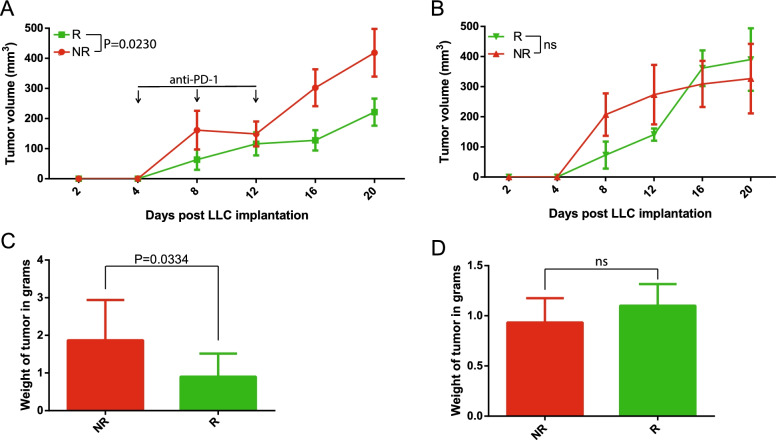Fig. 2.
Responder microbiota transplantation decreases tumor growth compared to non-responder colonized mice following immunotherapy treatment. A Growth curve of LLC-luc subcutaneous allograft tumors after human fecal microbiota transplant from responder (n = 4) or non-responder (n = 6) pooled feces into germ-free mice (n = 9/group) treated with anti-PD-1 monoclonal antibody injection. Each point is tumor volume mean ± SEM. ANOVA P = 0.023 at the endpoint. B Growth curve of untreated LLC-luc subcutaneous allograft tumors after human fecal microbiota transplant from responder (n = 4) or non-responder (n = 6) pooled feces into germ-free mice (n = 5/group). Each point is tumor volume mean ± SEM. ANOVA P > 0.05 at the endpoint. C Mean ± SEM of tumor weight at the endpoint for mice treated with an anti-PD-1 monoclonal antibody that received FMT from either responder or non-responder pooled feces. Mann-Whitney P = 0.033. D Mean ± SEM of tumor weight at the endpoint for untreated mice that received FMT from either responder or non-responder pooled feces. Mann-Whitney P > 0.05

